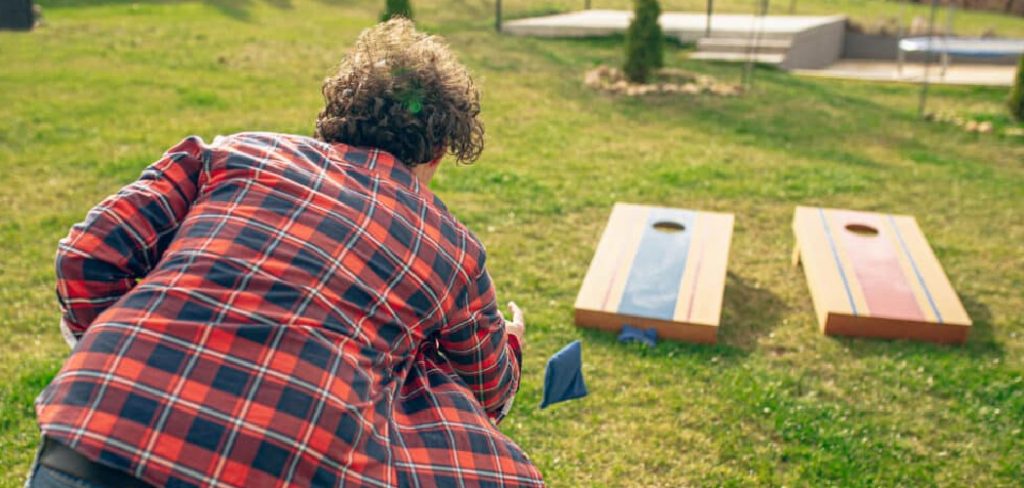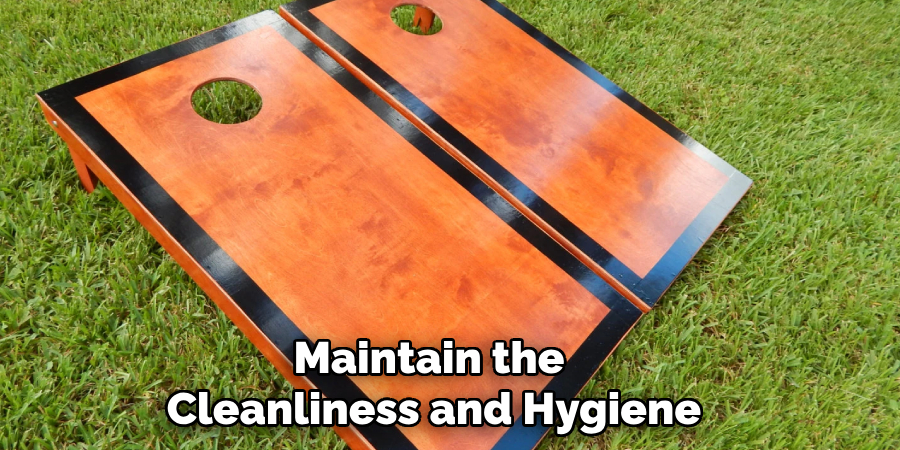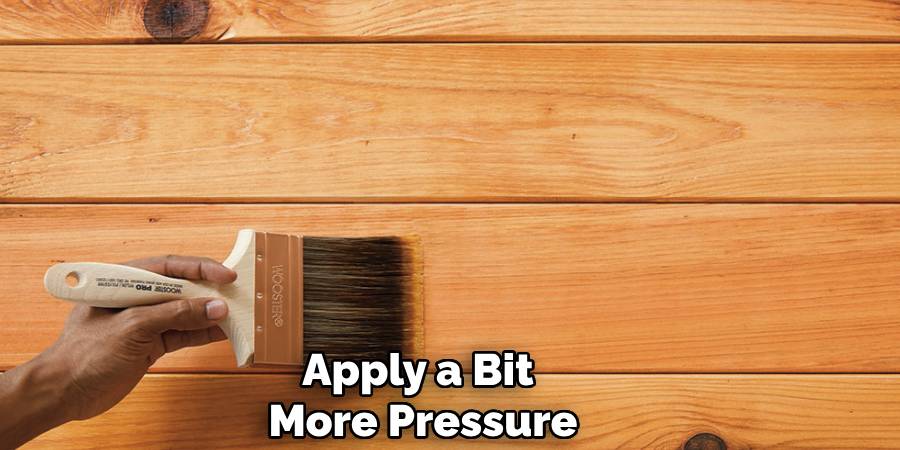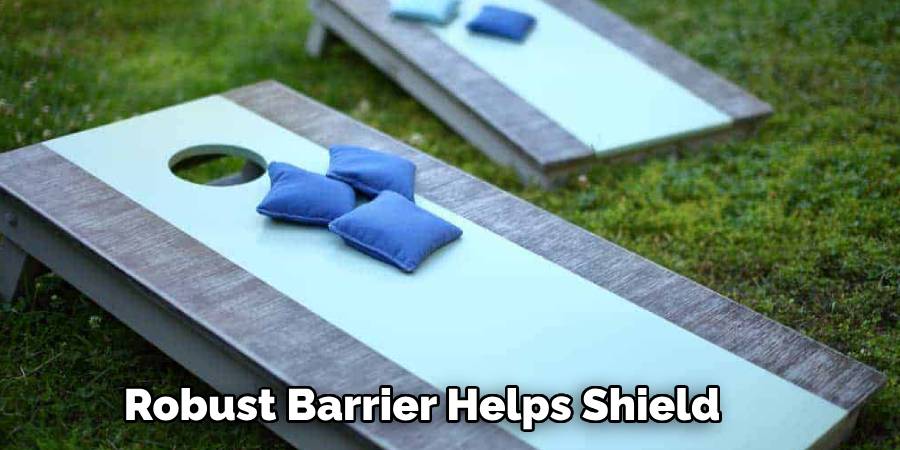Cornhole is a popular lawn game that combines skill and camaraderie, making it a favorite pastime at backyard parties, tailgates, and family gatherings. The game involves tossing bean bags towards a raised platform with a hole in it, and while the focus is on gameplay, the condition of the cornhole boards plays a crucial role in ensuring optimal play. Maintaining the boards enhances their appearance and extends their lifespan, ensuring they remain a reliable part of your outdoor activities.
Regular cleaning helps remove dirt, stains, and debris, preserving the wood’s integrity and finish. In this article, we will provide detailed steps on how to clean cornhole boards effectively, cover materials needed, preparation of cleaning solutions and surface cleaning techniques, deep cleaning for tough stains, as well as polish and protect your boards for long-lasting enjoyment.

Materials and Tools Needed
To effectively clean your cornhole boards, gather the following materials and tools:
Materials:
- Mild dish soap
- White vinegar
- Water
- Wood polish
Tools Required:
- Soft cloths
- Sponge
- Bucket
- Soft-bristle brush
- Microfiber towel
Optional Materials:
- Sandpaper
- Wood filler
- Sealant
Having these items on hand will ensure a thorough and efficient cleaning process for your cornhole boards.
Preparing the Cleaning Solution
Mixing Soap and Water
To begin, combine mild dish soap with warm water in a bucket, ensuring a gentle cleaning solution. Use about two tablespoons of soap for every gallon of water. Stir the mixture well until the soap is fully dissolved, which will help prevent any residue from remaining on the boards during the cleaning process. This solution is effective for regular upkeep and safely removes dirt without damaging the wood.
Optional Vinegar Solution
Mix equal parts white vinegar and water in a separate container for tougher stains or additional sanitizing power. This solution serves as a natural disinfectant and can effectively tackle stubborn dirt. Apply the vinegar solution after the soap treatment for targeted stain removal, allowing it to sit for a few minutes before scrubbing. This method is a great way to maintain the cleanliness and hygiene of your cornhole boards.

How to Clean Cornhole Boards: Cleaning the Surface
Removing Loose Dirt and Debris
Before diving into a thorough wash, it is essential to address loose dirt and debris that can accumulate on the boards. Start by gently wiping the surface with a dry, soft cloth to pick up any larger particles. This initial step helps prevent any scratching during further cleaning. Next, use a soft-bristle brush to reach the corners and crevices, sweeping away the finer dirt particles. This method ensures the boards are free from any loose debris before applying your cleaning solutions, preparing the surface for more detailed cleaning.
Washing with Soap Solution
Once the surface is clear of loose dirt, it’s time to wash the boards using your prepared soap solution. Dip a clean sponge into the soapy mixture and gently wring out the excess water, ensuring the sponge is damp but not dripping. Begin scrubbing the surface of the boards with the sponge, focusing on any stained or especially dirty areas that require extra attention. Using a gentle approach is important to avoid damaging the wood finish. You may want to apply a bit more pressure for deeper stains, but always be mindful of the wooden texture. As you work, ensure you do not saturate the boards with water, as excessive moisture can warp or damage the wood.

Rinsing and Drying
After thoroughly scrubbing the boards, use a clean, damp cloth to remove any remaining soap residue. This step is crucial for maintaining the wood’s finish and preventing any soap buildup. Finally, dry the boards thoroughly with a microfiber towel to protect them from water damage and ensure they remain in good condition.
How to Clean Cornhole Boards: Deep Cleaning and Stain Removal
Using Vinegar Solution for Stains
The vinegar solution can be particularly effective for tougher stains that resist regular cleaning methods. Begin by applying the mixture of equal parts white vinegar and water directly onto the stained areas of the cornhole boards. Allow it to sit for about five minutes, which helps to break down the stain’s grip on the wood. After the wait, gently scrub the area with a soft-bristle brush, using light pressure to avoid damaging the surface. Rinse the area with a damp cloth to remove any residue, ensuring the boards are clean and free from lingering vinegar.
Sanding Out Tough Stains
In instances where stains remain stubborn, light sanding may be required. Use fine-grit sandpaper to carefully sand the stained area, applying minimal pressure to avoid excessive removal of the wood surface. Focus on the stain and move toward the wood grain to maintain the board’s integrity. Once the stain has lifted, wipe away the sanding dust with a damp cloth, followed by a thorough drying process. This method removes the stain and prepares the surface for any further refinishing that may be necessary.
Repairing Surface Damage
After deep cleaning and addressing stains, it’s important to inspect the cornhole boards for any surface damage, such as cracks or dents. For minor imperfections, start by applying a wood filler that matches the color of your boards. Follow the manufacturer’s instructions and allow the filler to dry completely, typically in a few hours or according to the product label.
Once the filler has been set, gently sand the filled areas with fine-grit sandpaper to ensure a smooth finish that is level with the rest of the board. Dust off the area with a clean, damp cloth to remove any debris from sanding. After this, you may want to apply a coat of wood polish or sealant to the repaired sections to protect them and help blend the finish. This thorough repair process will not only enhance the appearance of your cornhole boards but also extend their usable lifetime.

Polishing and Protecting the Boards
Applying Wood Polish
To enhance the appearance of your cornhole boards and provide an added layer of protection, start by applying a small amount of wood polish to a soft, lint-free cloth. Begin in a corner of the board and rub the polish into the wood using a circular motion, ensuring even coverage over the surface. Focus on one section at a time, allowing the polish to penetrate the wood and bring out its natural grain and luster. After covering the area, use a clean, dry cloth to buff the surface, applying light pressure to achieve a smooth finish. This polishing process not only improves the visual appeal of the boards but also helps protect the wood from everyday wear and tear.
Sealing the Boards
After polishing, sealing the cornhole boards is essential for long-lasting protection and to maintain their finish. Choose a high-quality clear sealant that is appropriate for wood, and if the boards will be used outdoors, ensure that it is suitable for exterior conditions. Using a clean brush or roller, carefully apply an even coat of the sealant across the surface, taking care not to over-saturate the wood.
Work in manageable sections, covering all areas while avoiding drips or pooling of the sealant. Once applied, allow the sealant to dry completely as per the manufacturer’s instructions, which is crucial for ensuring durability and resistance to moisture. This drying process may take several hours, but it will result in a robust barrier that helps shield your cornhole boards from damage, thereby prolonging their lifespan for countless games to come.

Maintenance Tips
Regular Cleaning Routine
To keep your cornhole boards in top condition, it’s essential to establish a regular cleaning routine. After each game, wipe down the boards with a damp cloth to remove any dirt, dust, or food particles, preventing grime buildup. For a more thorough cleaning, perform a deep cleaning every few months, adjusting the frequency based on how often you use the boards. This process should include washing with soap solution, rinsing, and re-sealing to maintain the wood’s integrity and appearance. Consistent maintenance will ensure that your boards remain in good shape for many games to come.
Proper Storage
Proper storage is crucial for extending the life of your cornhole boards. Keep them stored in a cool, dry place away from direct sunlight to prevent warping and fading. Humidity can also adversely affect the wood, so select a location with stable temperature and moisture levels. When not in use, cover the boards with a protective tarp or a custom cover to shield them from dust, debris, and potential weather damage if they are placed outdoors. By taking these steps, you’ll help preserve the quality and longevity of your cornhole boards.
Conclusion
In summary, knowing how to clean cornhole boards properly is vital for maintaining their appearance and functionality. Begin with regular cleaning after each game to remove dirt and debris, followed by a deep clean every few months. When tackling tough stains, utilize vinegar solutions or sanding techniques as needed. Don’t forget to repair any surface damage with appropriate wood fillers and apply wood polish for added shine and protection. Sealing the boards ensures they withstand moisture and daily wear. Committing to these practices enhances the visual appeal of your boards and contributes to a superior gameplay experience. By investing time in cleaning and protecting your cornhole boards, you ensure they remain a durable and attractive playing surface, making every game enjoyable for you and your friends.
About the Author
Adrian Green, a lifelong woodworking enthusiast, shares his passion for the craft through The Woodenify Blog. With a foundation built on years of hands-on experience in his father’s woodworking shop, Adrian is dedicated to helping others learn and grow in the world of DIY woodworking. His approach to woodworking combines creativity, practicality, and a deep appreciation for the art of building with your own hands. Through his blog, he inspires individuals of all skill levels to embark on their own woodworking journeys, creating beautiful, functional pieces of furniture and décor.
Professional Focus
- Specializes in DIY woodworking projects, from furniture to home décor.
- Provides step-by-step guides and practical tutorials for woodworkers of all skill levels.
- Dedicated to helping readers build confidence and skill through easy-to-follow instructions and tips.
- Passionate about fostering a community of makers who can share, learn, and grow together.
Education History
- University of Craft and Design – Bachelor of Fine Arts (BFA) in Woodworking and Furniture Design
- Woodworking Apprenticeships – Extensive hands-on training with skilled craftsmen to refine carpentry and furniture making techniques.
- Online Courses & Masterclasses – Continued education in advanced woodworking techniques, design principles, and specialized tools
Expertise:
- DIY woodworking, carpentry, furniture making, and home décor projects.
- Creating accessible tutorials and guides for beginner to advanced woodworkers.
- Sharing the joys and satisfaction of woodworking, from raw materials to finished products.
